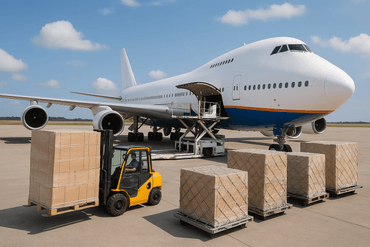
The history of Incoterms



We’re still more than a year away from seeing a finalized version of the next edition of Incoterms. But already, there have been expectations and even certain speculations from the ocean freight industry, which is generating some buzz as to what changes we can expect in Incoterms 2020.
So now seems like a good time to dive into the history of Incoterms.
When were they first implemented? Why were they needed? What problems did each successive version aim to solve? And more importantly, what can we expect to see in the future?
Here’s a look at the history of Incoterms - how they were born and their evolution through the years as the processes and practices commercial trade advance.
A short history of Incoterms
The FOB Incoterm was the first Incoterm to be created. And even though its origin traces back over more than two centuries, Incoterms as they are now weren’t actually created until 1936 by the International Chamber of Commerce (ICC).
Since then, the international transportation community has gone through many changes. To adapt, there have been new and improved editions of the Incoterms like the ones introduced in 1953, 1967, and 1976.
But over the past five decades, revisions have been implemented at the turn of every decade and tend to stay in effect for the entire decade, such as Incoterms 1980, 1990, 2000, and 2010.
The importance of Incoterms and how they facilitate world trade cannot be denied. When Incoterms were first introduced, they applied only to 13 countries. Eight revisions later, they are now widely used in over 140 countries and can be found in 31 different languages.
A reflection of the evolution of international trade
The world of international trade has seen many changes over the past 80 years - some monumental, others relatively small-scale. These changes include new methods of transport, modifications in the types of international sales contracts, amendments to customs clearance of goods, new ways of transmitting information, to name a few.
And as such behaviour changes, so must the terms that govern them. The ICC’s objectives of revising Incoterms are to guarantee that the set of transport terms keeps up with the pace of progress and adapts to the evolving needs of international trade.
We may think of the incoterms as a pretty accurate reflection of how the world economy and trade have developed and advanced. The 1980 edition of the incoterms introduced changes motivated by the increasing volume of container traffic, while the 1990 edition was evidence to the growth of intermodal transport. In 2010, Incoterms were revised to solve security problems and improve issues related to the digital exchange of information.
The main changes over the course of the history of Incoterms are highlighted in this infographic.
![]()
1812: The FOB Incoterm was first used in the British Courts in 1812. This was later known as the forefather of the famous transport clauses - Incoterms.
1895: 83 years later, thanks to the expansion of world trade, a second Incoterm was born.
1936: The birth of Incoterms as we know them today. In 1936, the ICC published the first edition with six Incoterms and rules on how to interpret them. For the first time in history, there was a global effort to standardize international trade practices.
1953: The first Incoterms revision came after WWII. Rail transportation was on the rise and three new Incoterms were introduced for non-maritime transport: Free on Rail, Free on Truck, and Delivered Costs Paid. EXW Incoterm was also added.
1976: The FOB Airport Incoterm (Free on Board Airport) was introduced for air freight to avoid confusion with the FOB Incoterm.
1980: Due to the proliferation of freight traffic in containers, two new Incoterms were added: FRC and FCI, which are known today as FCA and CIP respectively.
1990: A complete revamp of Incoterms to adapt to inter-modal transportation. Changes were made to accommodate the increasing use of Electronic Data Interchange (EDI).
2000: In 2000, Incoterm formats were simplified for clarity and to better distribute responsibilities for customs clearance.
2010: Four Incoterms (DAF, DES, DEQ, DDU) were eliminated and two new ones (DAT and DAP) introduced, bringing the number of Incoterms to 11. Modifications were also made so that buyer and seller were obliged to cooperate in the exchange of information as a security measure.
2020: Definitive changes yet to be announced. But we can expect to see the introduction of a new Incoterm, Cost and Insurance (CNI), and the removal of EXW and FAS. Also expect a more simplified version to aid comprehension and application of each Incoterm.
Related Articles


